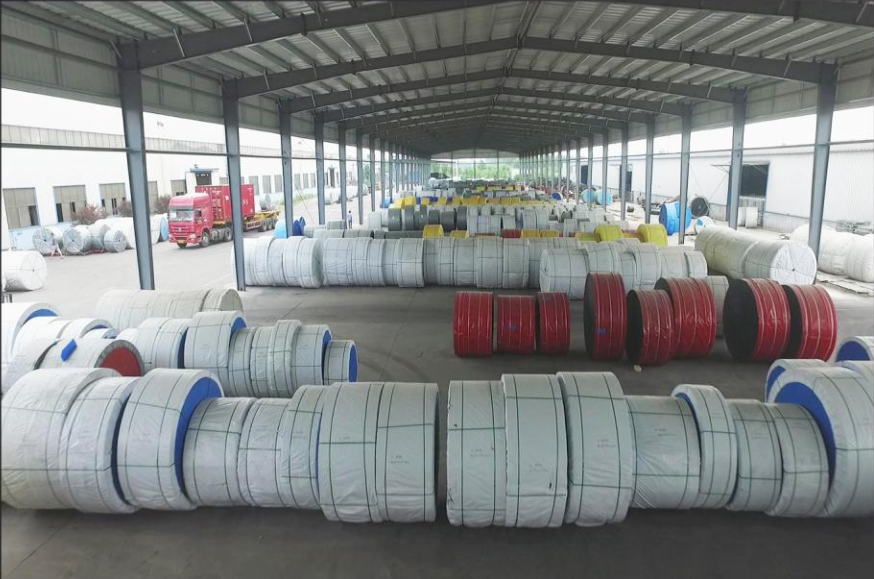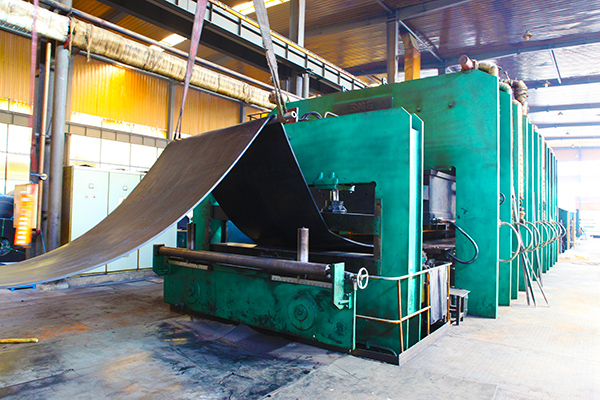Revolutionizing Efficiency: Rubber Conveyor Belts Streamline Industrial Workflows
Rubber Conveyor Belts
In today's fast-paced industrial landscape, maximizing efficiency is key to stay competitive. A breakthrough innovation has emerged, revolutionizing the way goods are transported within manufacturing facilities. Rubber conveyor belts have proven to be a game-changer, streamlining workflows and optimizing productivity like never before.

These cutting-edge rubber conveyor belts, meticulously engineered with durability and performance in mind, have become an indispensable tool for industries worldwide. With their seamless operation, they enable a smooth flow of materials, reducing the risk of bottlenecks and increasing overall productivity.
One of the industries benefiting greatly from this innovation is the automotive sector. Automakers, faced with growing production demands, have adopted rubber conveyor belts to enhance their assembly lines. The belts effortlessly transport components from one workstation to another, reducing manual handling and speeding up the production process. This improvement translates into shorter lead times, increased output, and ultimately, a more satisfied customer base.
Additionally, the food and beverage industry has embraced this technology to maintain high-quality standards while meeting the demands of a rapidly growing market. Rubber conveyor belts provide a hygienic and efficient solution for moving perishable goods through various stages of processing, packaging, and distribution. By minimizing human contact and contamination risks, these belts ensure the safety and freshness of the products, gaining customers' trust and loyalty.
Another noteworthy aspect of rubber conveyor belts is their ability to adapt to different environments. Whether it's extreme temperatures, harsh chemical exposure, or high loads, these belts are designed to withstand the most challenging conditions. This versatility allows various industries, such as mining and construction, to optimize their operations, reduce downtime, and improve overall safety for workers.
In an ever-evolving digital world, successful marketing techniques must leverage current events to captivate audiences. Recent environmental concerns have sparked a global conversation on sustainability. Rubber conveyor belts contribute to this dialogue by reducing energy consumption and minimizing waste. Manufacturers utilizing these belts can position themselves as eco-friendly and responsible, appealing to environmentally-conscious consumers seeking sustainable products.
To further enhance customer satisfaction and promote brand loyalty, manufacturers have also incorporated smart technologies into their rubber conveyor belts. Integration with advanced control systems, sensors, and monitoring devices allows real-time data analysis, predictive maintenance, and swift troubleshooting. This proactive approach facilitates optimized operations while ensuring minimal downtime and maximum uptime.

In conclusion, rubber conveyor belts have emerged as indispensable allies for industries worldwide, revolutionizing workflows and boosting productivity. Their ability to seamlessly transport materials, support various industries, adapt to demanding conditions, and promote sustainability make them an essential tool in the modern industrial landscape. By embracing this technology, businesses can stay ahead of the competition, enhance efficiency, and meet the evolving needs of their customers.
 O'zbek
O'zbek slovenský
slovenský Azərbaycan
Azərbaycan Қазақ
Қазақ Latine
Latine ລາວ
ລາວ български
български नेपाली
नेपाली فارسی
فارسی Javanese
Javanese Українська
Українська Lietuvos
Lietuvos Română
Română Slovenski
Slovenski پښتو
پښتو Punjabi
Punjabi Bosanski
Bosanski Malti
Malti Galego
Galego Afrikaans
Afrikaans Esperanto
Esperanto 简体中文
简体中文 Српски
Српски मराठी
मराठी Ελληνικά
Ελληνικά čeština
čeština Polski
Polski ไทย
ไทย Nederlands
Nederlands Italiano
Italiano Tiếng Việt
Tiếng Việt Deutsch
Deutsch français
français русский
русский Português
Português Español
Español 한국어
한국어 Svenska
Svenska Malay
Malay اردو
اردو norsk
norsk Indonesia
Indonesia عربى
عربى Gaeilge
Gaeilge Türk
Türk Pilipino
Pilipino हिन्दी
हिन्दी Dansk
Dansk বাংলা
বাংলা English
English


What is a Metering Conveyor
In modern material handling systems, efficiency and precision are critical to maintaining smooth operations. Among the many specialized conveyors used in industries such as packaging, food processing, mining, and logistics, the metering conveyor plays a vital role. But what exactly is a metering conveyor, and why is it becoming increasingly important in production environments?
Read MoreJuli Engineering Gains Global Recognition Among Mining Conveyor Manufacturers
The mining industry relies heavily on efficient material handling systems to ensure productivity and safety in large-scale operations. Among the many solutions available, mining conveyors stand out as indispensable equipment for transporting bulk materials such as ore, coal, and aggregates. As demand for advanced solutions grows, Juli Engineering has established itself as one of the most reliable mining conveyor manufacturers, offering durable, high-performance systems tailored to global mining needs.
Read MoreDesign and Application of a Comprehensive Coal Spillage Handling System for Downwards Transportation Belt Conveyor
A belt conveyor with an annual production capacity of 3 million tons is installed in a main inclined roadway with a steep angle of 22°. During operation, issues such as coal overflow, spillage, and falling coal occur, particularly when transporting raw coal with high moisture content.
Read More